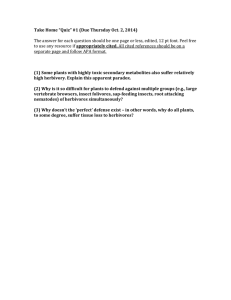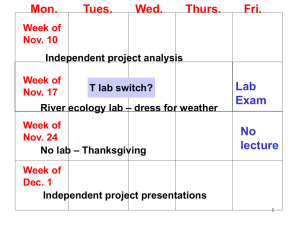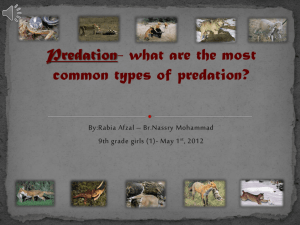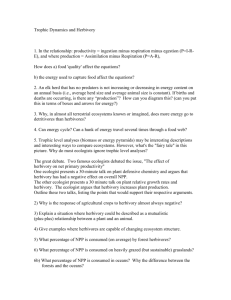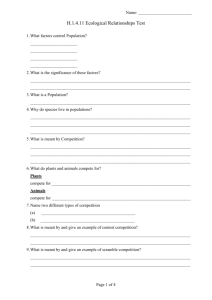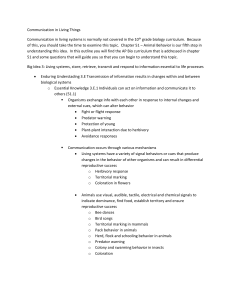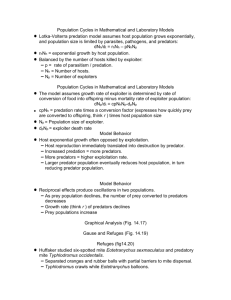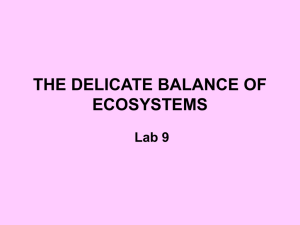LECTURE 20 CHAPTER 17 PREDATION AND HERBIVORY
advertisement
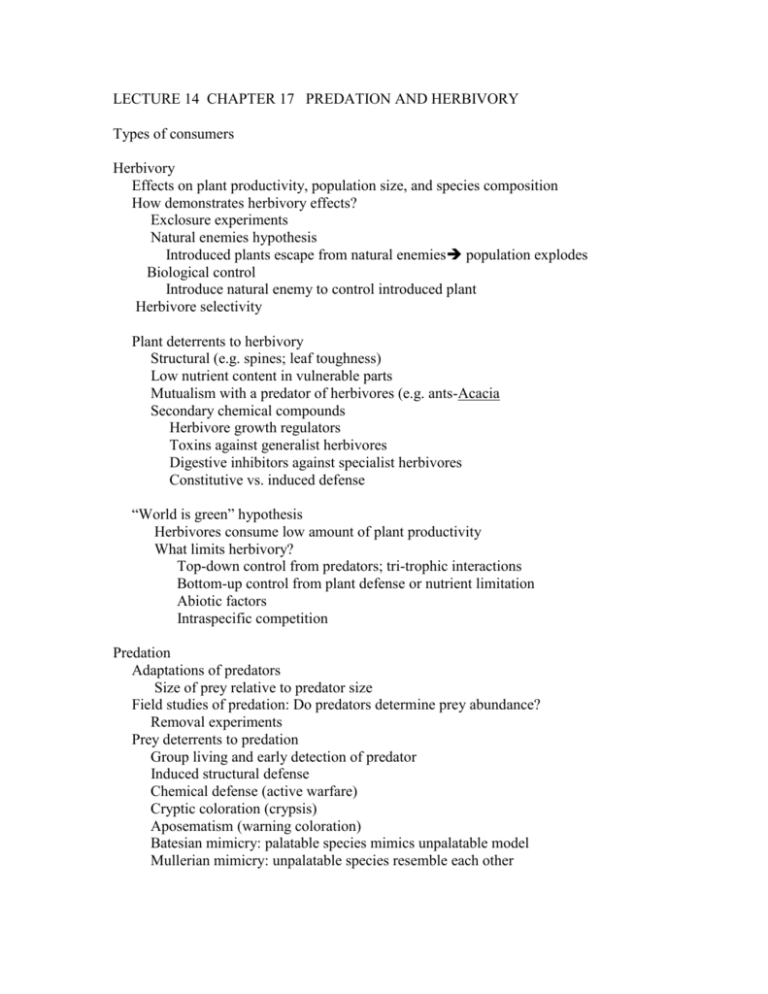
LECTURE 14 CHAPTER 17 PREDATION AND HERBIVORY Types of consumers Herbivory Effects on plant productivity, population size, and species composition How demonstrates herbivory effects? Exclosure experiments Natural enemies hypothesis Introduced plants escape from natural enemies population explodes Biological control Introduce natural enemy to control introduced plant Herbivore selectivity Plant deterrents to herbivory Structural (e.g. spines; leaf toughness) Low nutrient content in vulnerable parts Mutualism with a predator of herbivores (e.g. ants-Acacia Secondary chemical compounds Herbivore growth regulators Toxins against generalist herbivores Digestive inhibitors against specialist herbivores Constitutive vs. induced defense “World is green” hypothesis Herbivores consume low amount of plant productivity What limits herbivory? Top-down control from predators; tri-trophic interactions Bottom-up control from plant defense or nutrient limitation Abiotic factors Intraspecific competition Predation Adaptations of predators Size of prey relative to predator size Field studies of predation: Do predators determine prey abundance? Removal experiments Prey deterrents to predation Group living and early detection of predator Induced structural defense Chemical defense (active warfare) Cryptic coloration (crypsis) Aposematism (warning coloration) Batesian mimicry: palatable species mimics unpalatable model Mullerian mimicry: unpalatable species resemble each other

